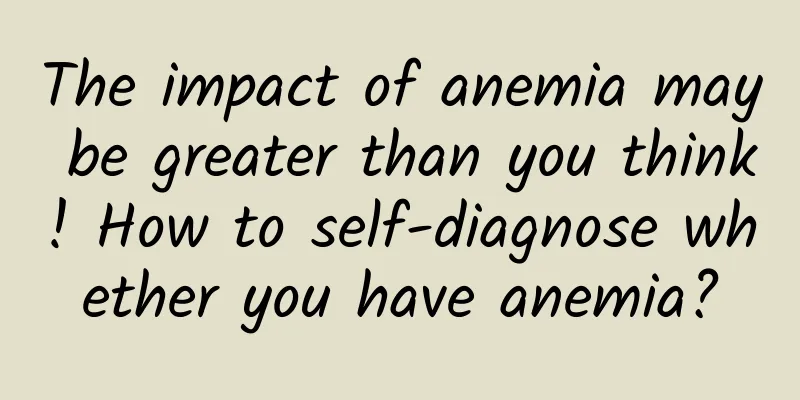Is it bad if the follicle is too big?

|
For women who want to have children, they are very concerned about the development of follicles. Only when the follicle is mature can it meet the sperm and form a fertilized egg, and finally achieve the effect of the fertilized egg implanting and gradually developing. If the follicle is too large, it is not a bad thing, and the ovulation time will not be too long. For women, they must seize the better time to conceive. Let's take a look at this aspect. Is it bad if the follicle is too big? It's not that it's completely bad. Because the follicle is ovulating, it becomes larger. Ovulation doesn't last too long, sometimes it's just a moment. Only after the egg is released can it have a chance to combine with sperm and become pregnant. Developmentally dominant follicle The primordial follicle is composed of a large primary oocyte and a single layer of flat follicle cells surrounding it. There are about 1 million primordial follicles in the ovarian cortex of newborns, but most of them cannot reach the mature stage. They atrophy and degenerate one after another to form atretic follicles. The development of primordial follicles into growing follicles does not require hormonal regulation. What are the criteria for a dominant follicle? The primary oocyte of a growing follicle is enlarged, and significant RNA and protein synthesis occurs within the cell. After the follicle cells become cubic or columnar, they rapidly proliferate into multiple layers. A thick membrane is formed between the oocyte and the follicle cells, called the zona pellucida, which is a gelatinous glycoprotein complex. Under the electron microscope, the microvilli on the surface of the oocyte and the protrusions of the follicular cells can be seen extending into the zona pellucida, which is beneficial for the follicular cells to transport nutrients to the oocyte. The zona pellucida plays an important role in identifying sperm species and preventing polyspermy. The follicular cells continue to proliferate, and the small cavities between the follicular cells gradually fuse into a larger follicular cavity, which is filled with follicular fluid containing hyaluronic acid, estrogen and nutrients. The criteria for the dominant follicle: As the follicular fluid continues to increase and the follicular cavity continues to expand, the oocyte and some of the surrounding follicular cells are squeezed to one side of the follicle and protrude into the follicular cavity, which is called the cumulus ovum. The remaining follicle cells that make up the egg wall are densely arranged into several layers, called the granulosa layer. A layer of columnar follicle cells close to the zona pellucida, arranged radially, is called the corona radiata. The connective tissue around the follicle forms two layers of follicle membranes. The inner layer has more cells and is rich in capillaries. The inner layer cells and follicular cells work together to secrete estrogen; the outer layer has more fibers. Starting from puberty, several to dozens of follicles grow and develop in each cycle, but only one follicle matures, occasionally two, and the rest are atretic. |
<<: Chest pain when wearing underwear
>>: How long does the ovarian follicle survive after it is expelled?
Recommend
Can women eat maca?
Of course women can eat maca, and if women take m...
Age of menarche for girls
Everyone knows that girls' puberty will be ac...
How to abort in early pregnancy? How to abort in early pregnancy?
Ladies should pay close attention if their menstr...
Scientific care for patients with swallowing disorders
Author: Bu Hongwei China Rehabilitation Research ...
How to maintain breasts after childbirth
Breast sagging is something that no woman wants t...
Can I save the baby in an ectopic pregnancy?
If women have an ectopic pregnancy, they will exp...
Rumors debunked! People with diabetes can’t exercise? Here are 4 types of exercise you can do
Many diabetic patients have heard rumors like thi...
There is still 85% residual blood after medical abortion
If there is still residue after medical abortion,...
Causes and relief of postpartum back pain
After giving birth, you need to sit in confinemen...
There are many benefits for babies to lie prone
The growth and development of babies has its own ...
Thigh pain in 6 months of pregnancy
Pregnancy is a period that women need to pay grea...
Non-lactating breast discharge
The most common cause of liquid discharge from a ...
Do people’s legs age first? In fact, the core reason for human aging is…
Photo/Hao Yanfang Peking Union Medical College Ho...
Is the ostrich a bird? Can the ostrich fly? Why?
The ostrich is the largest bird in the world. Alt...
What are the harms of having an IUD on a woman's body?
Do you know what an IUD is? I remember I was very...









